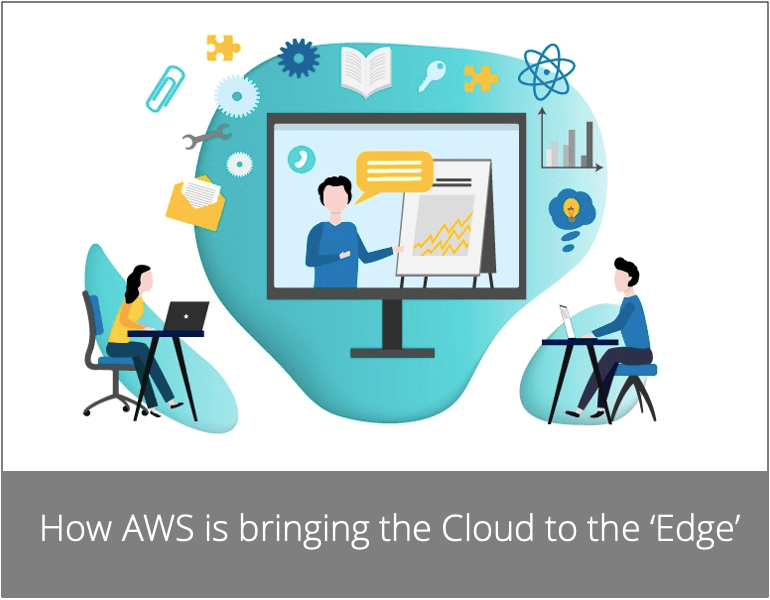
How AWS is bringing the Cloud to the ‘Edge’
Gartner predicts that 90% of enterprises in the market will move to the cloud by 2022, generating a total value of $278.3 billion. Amazon Web Services (AWS) reported 29% growth in Q3 2020, retaining the top cloud provider’s position. While AWS is still the top cloud service provider with a 32% market share, the question remains: Are enterprise data safe in AWS?
While enterprises realize that moving to the cloud is inevitable to take advantage of scalability, agility, and many other benefits, security in the public cloud remains a concern. 91% of organizations feel data security in the cloud is a growing concern, with individual and organized hackers becoming more adept at exploiting vulnerabilities in cloud systems, which is why many hold back from having mission-critical workloads and data in the cloud.
Common AWS Security Threats
Despite AWS’s airtight security, AWS Security Report reveals that enterprise data and workloads are not entirely secure in the cloud.
While AWS has a reliable security and governance mechanism in place, according to the Shared Responsibility Model, organizations are responsible for the safekeeping of their data and workloads in the cloud.
Some of the security threats in AWS are as follows:
1. Blind spots
Infrastructure security visibility is a challenge for cybersecurity professionals, especially when the workloads are in a public cloud. While cloud platforms like AWS allow distributed control and access to data and workloads from anywhere, it also poses the challenge of having complete infrastructure visibility for the enterprise. Enterprises cannot secure what they do not know exists. Since security in AWS is a shared responsibility, enterprises need to have end-to-end infrastructure visibility and ensure all the endpoints are secured.
2. Misconfigurations
With numerous configuration offerings of each service, cloud infrastructure, with hundreds of services, is complex. Though AWS offers blanket security, the survey reveals that misconfiguration of the cloud platform is the single biggest vulnerability to cloud security. Lack of complete visibility makes it difficult to identify misconfigurations even after data is compromised, making AWS vulnerable to cyberattacks. Enterprises need to regularly audit roles and policies that facilitate access to ensure data security in the cloud.
3. Incompatible with legacy security solutions
Traditional host and network-based security tools are incompatible with AWS’s distributed virtual environment. Enterprises already invested in legacy security solutions find it difficult to deal with the digital risk of moving to the cloud. According to the 2019 AWS Cloud Security Report, 85% of enterprises confirm that legacy security solutions have limited functionality or are non-functional in AWS.
AWS Security Best Practices in 2021: 4 Simple Ways to Maximize your Data Security in AWS
Some best AWS security practices to ensure data privacy and integrity and to protect your organization from being vulnerable to online attacks are:
1. Strategize security before moving to AWS
While moving to AWS, enterprises often consider securing their workloads on the go as AWS offers blanket security. Ideally, enterprises should strategize to better assess a tool or control while choosing or giving access rights.
2. Get visibility on access controls
With multiple applications running on the cloud, it is impossible to have end-to-end visibility on who is accessing what and when. To overcome this, after having a strategy to secure your data in AWS, you should go beyond logs and have complete visibility to detect and prevent insider threats.
3. Define role-based access
Knowing who can take appropriate action is essential if and when a security breach occurs. Therefore, it is crucial to pinpoint liabilities for access control, monitoring, and audit logging to determine who can access what, how to monitor data and applications, and how to handle alerts.
4. Securing multi-tenant architecture
While multi-tenancy has advantages, it also makes data vulnerable if the process is immature or the staff is untrained. While AWS has its inherent security mechanism to ensure only you can access your data, you can improve networking, system access mechanism, and vulnerability management to mitigate the risk of multi-tenant architecture.
AWS has various scanners and security tools built specifically to address your compliance and security needs. At Rapyder, we can help you manage your crucial data and keep it safe with our end-to-end AWS security solutions to ensure –
- Network security
- Data security
- Security information and event management
- Identity and access management
- Security management, governance, and compliance
- Cloud access security
Think your business needs to get edge computing or cloud computing to its technology stack? Get in touch with the AWS cloud service provider experts at Rapyder today! Contact us now for a free consultation.
Further Reading: AWS Security – What Makes Misconfiguration Critical?
STAY UP TO DATE WITH OUR NEWSLETTER
Sign-up for our Newsletter to receive insights, research and expert articles on AWS Services, Cloud Migration, DevOps and other technologies.




